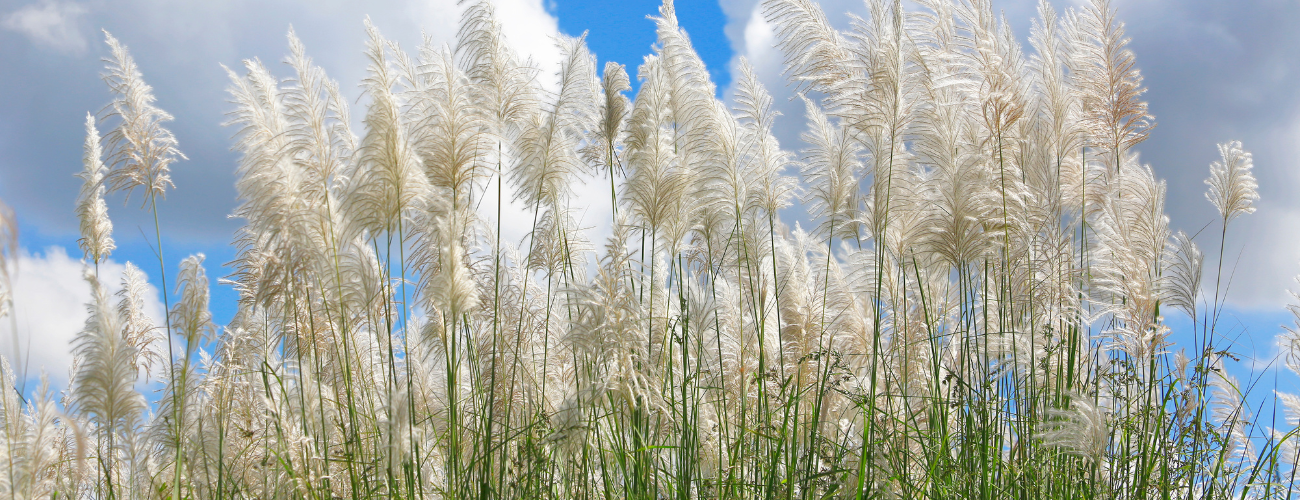Grass is not just for your lawn. There are many ornamental grasses that have a wonderful aesthetic and look amazing in a border. Ornamentals grasses are brilliant for mixing in with the more showy flowers of summer and filling spaces. Earlier in the season they act as frames for the stars of the summer show. They glue a border together creating continuity. As the flowers of summer begin to fade in the autumn, grasses take over the reins. They provide a rich fullness. Taller varieties in particular look stunning in the lower angle of sunlight through this season. They have a shimmering, airy luminosity which works brilliantly with the autumn colour palette.
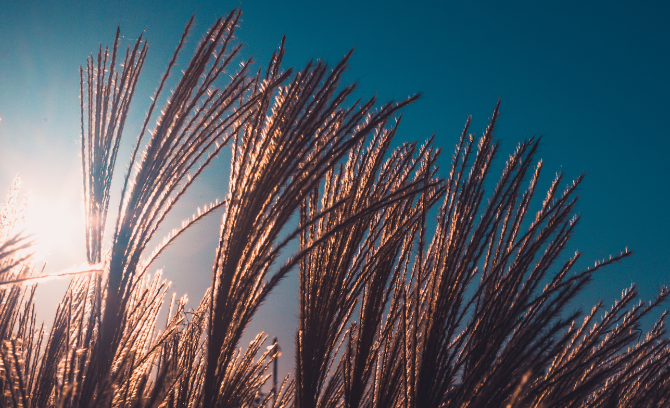
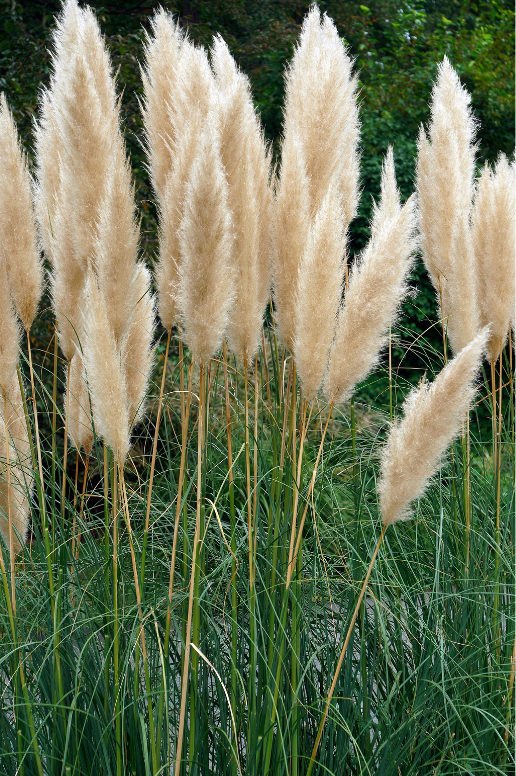
Larger architectural varieties like pampas grasses or Stipa gigantea can be used equally as standalone statements or in mixed borders. The Stipa, although very tall has such light and airy plumes that it is almost see through. It provides interest without blocking the view. Pampas grass has been in and out of favour over the years, but the larger varieties can make dramatic statements. The plumes are also prized as dried cut flowers. Pampas grasses are great for providing height and structure in coastal or windy places where they stand up to the weather. There are also dwarf varieties available which are perfect for pots.
Calamagrostis Karl Foerster is another tall grass but with a much more slender upright habit. It stands up to the wind right through winter without requiring support. It is really useful planted in rows to screen different areas. In a border it looks best planted in groups of three amongst other taller flowering perennials such as Perovskia, Helenium and Salvia Amistad.
Panicum are one of the original American prairie grasses. Medium-sized and stunning planted in small groups through the middle of a border or in ribbons through a prairie style garden. Most have blue-grey foliage with airy pinkish panicles. The variety Shenandoah has red and orange tipped foliage in summer, with red tinted flower panicles giving it a fiery glow. Going into autumn the foliage turns a dramatic orange-yellow. The panicles hold on until winter looking beautiful covered in frost.
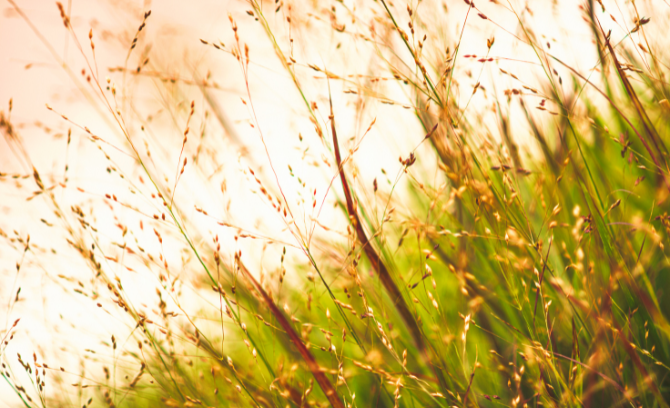
Pennisetum are small to medium-sized grasses. These are the ones with incredibly tactile furry plumes often known as rabbit or squirrel tails. I can’t walk past one without stroking it. Some Pennisetum are not completely winter hardy. If you are in a frost pocket or soil that sits soggy over winter, then grow them in pots and move to a cold greenhouse or conservatory, keeping them just moist. If you are on free-draining soil in a sheltered spot you could get away with mulching the crown.
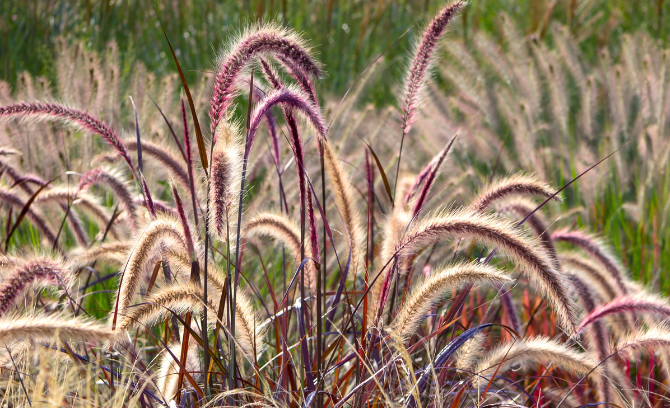
Stipa tenuissima is a very popular grass that will grow almost anywhere. It is drought tolerant and works well ribboned through gravel gardens as well as borders. It is also tolerant of salty air and looks beautiful in a planter with a mixture of perennials. Stipa tenuissima has beautiful silky tips in summer and is a ‘must-have’ for creating a sense of movement and softness within the garden.
Shorter grasses are perfect for giving a softness to border edges. They can also be used to hide the tatty stems and foliage of spring bulbs or summer perennials as they mature. Perennials like echinacea can have somewhat ‘knobbly knees’ as they head into autumn. Many shorter grasses like festuca, ophiopogon and the wide range of carex are evergreen. They provide structure and colour throughout the year.
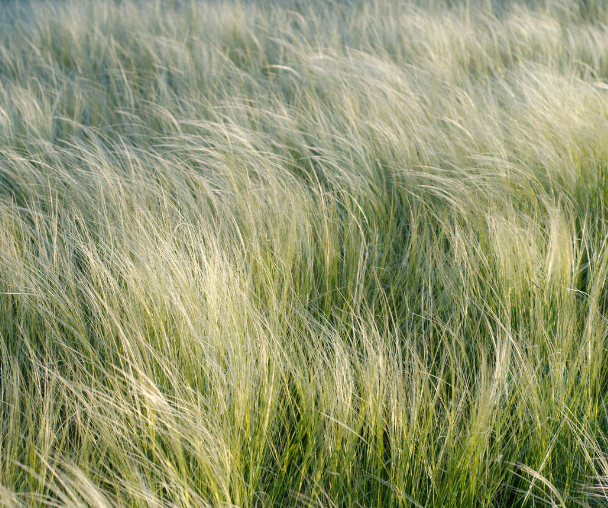
Ophiopogon is not strictly a grass but looks so much like one that it is usually sold with the grasses in garden centres. The black varieties look stunning in dramatic planting schemes. They contrast dramatically with silver foliage plants like Senecio ‘Angel Wings’. Festuca can be used in a similar way. With its silvery-blue foliage it goes really well in Mediterranean and contemporary gardens.
Carex are sedges. They prefer a slightly moister soil and can tolerate a little more shade than most grasses in general. As clump forming evergreen grasses, they can be varying shades of green to gold, variegated or bronze in colour. Perfect for softening the edges of paths or in mixed planters.
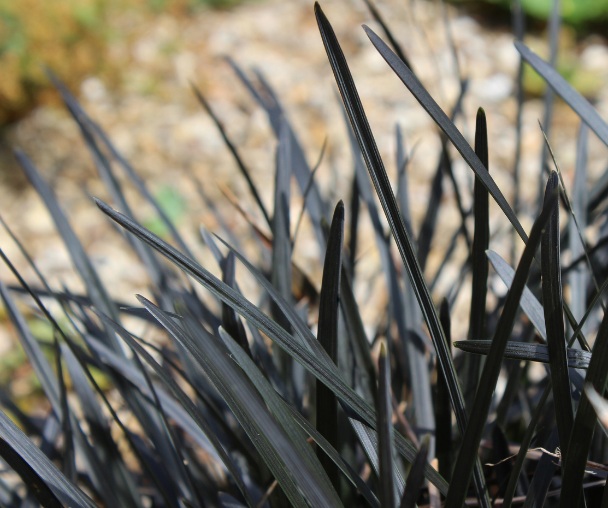
Hakonechloa is one of my favourite grasses. As lush arching grass that enjoys shade, it is perfect for Japanese style gardens. In mixed planters the foliage can cascade over the edge of the pot. It is deciduous, but it puts on a lovely autumn show before it dies back in the winter. The golden variety ‘Aureola’ is my favourite for shining out in a shady spot.
Maintaining grasses is easy. They tend to be resilient to pests and diseases and require very little feeding. In fact excess nitrogen should be avoided. Evergreen varieties need a tidy up once or twice a year. Wearing gloves comb through the foliage with your fingers pulling out any loose stems or foliage. Trim back anything that looks tatty.
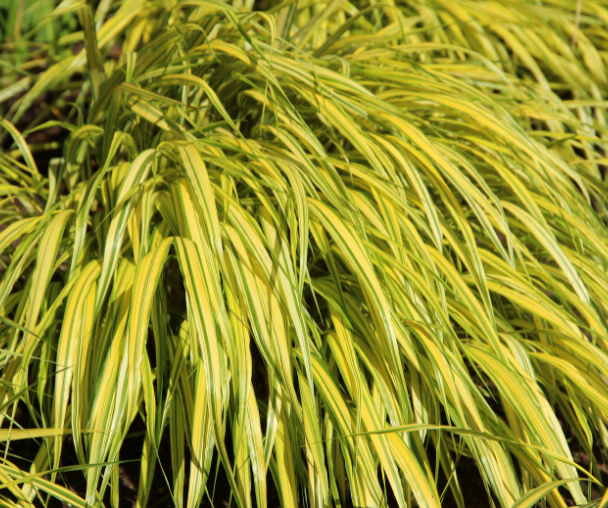
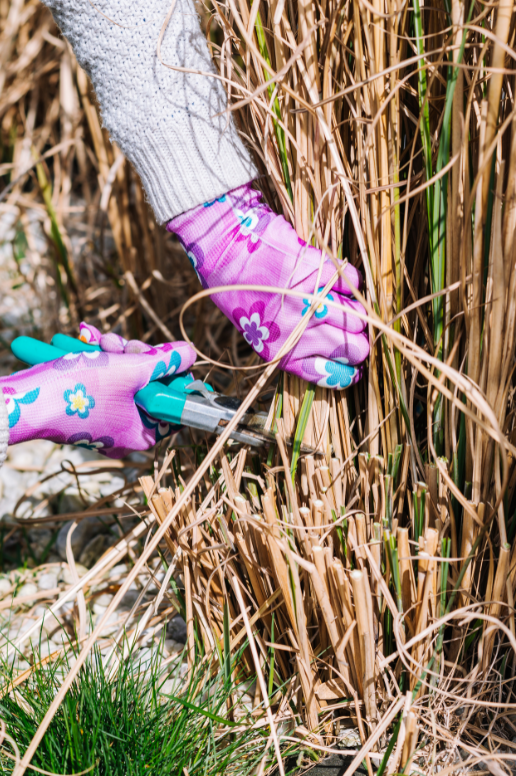
Deciduous grasses can usually be left to stand through the winter for interest and structure. The seed heads rimed with frost sparkle in the lower light levels. The less hardy varieties like some of the pennisetum need protecting from frost.
Towards the end of winter or whenever they look tatty simply cut them back to just above the ground. Don’t cut into any new spring growth. Leave the cut stems at the back of a border or in an out of the way corner because beneficial insects like ladybirds often hibernate in the hollow stems.
For grasses planted into pots for the longer term use a soil based compost such as John Innes No2. When planting in the ground try to group in threes or create a ribbon of each variety through a border. Larger specimens look great planted individually as a focal point.
Grasses can have a big impact. They provide texture, architectural structure, soften hard landscaping and give movement to a garden. Their tactile plumes and soft whispering foliage as they move in the breeze, adds to the all round sensual experience. There is a grass for every situation.

By our resident horticultural expert





